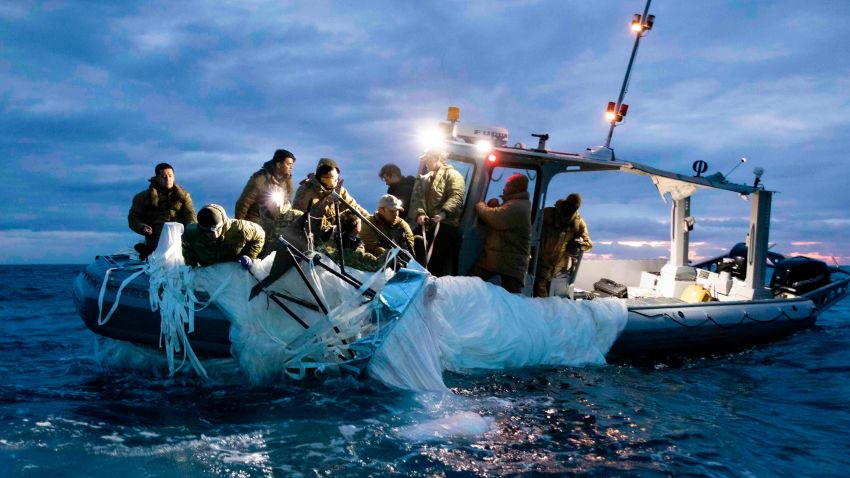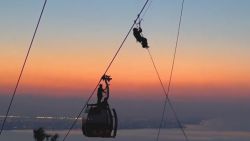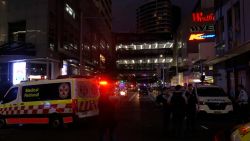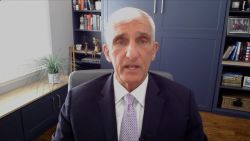A day before the suspected Chinese spy balloon entered US airspace over Alaska, the Defense Intelligence Agency quietly sent an internal report that a foreign object was headed towards US territory, military and intelligence officials familiar with the matter told CNN.
The report – also known as a “tipper” – was disseminated through classified channels accessible across the US government. But it wasn’t flagged as an urgent warning and top defense and intelligence officials who saw it weren’t immediately alarmed by it, according to sources. Sources familiar with the report said that the White House was not made aware of the DIA report, and President Joe Biden was not briefed on it.
Instead of treating it as an immediate threat, the US moved to investigate the object, seeing it as an opportunity to observe and collect intelligence.
It wasn’t until the balloon entered Alaskan airspace, on January 28, and then took a sharp turn south that officials came to believe it was on a course to cross over the continental US – and that its mission might be to spy on the US mainland.
This timeline of events – previously unreported – helps explain why US defense officials declined to act before the balloon had crossed over US territory. That lack of urgency has become a sharp political flashpoint on Capitol Hill, where some Republicans have criticized the administration for not sounding the alarm sooner.
“Our government knew a Chinese military spy balloon was going to enter the airspace over the continental U.S. at least TWO DAYS BEFORE it happened Yet they failed to act to stop it,” Sen. Marco Rubio, the top Republican on the Senate Intelligence Committee, tweeted on Wednesday. “Biden must disclose to Americans when they knew the spay [sic] balloon was headed towards the U.S. & explain why they didn’t stop it.”
Officials familiar with the original DIA report conceded Rubio’s point that they didn’t see the balloon as an urgent threat until it was already over US territory – even as fresh revelations have emerged about what the US knew about Chinese spy balloons.
During a closed door briefing on Tuesday, Senate staff repeatedly pressed military officials about who knew what – and when. On Wednesday, Rubio and Sen. Roger Wicker, the top Republican on the Senate Armed Services Committee, sent a letter to Biden’s top defense and intelligence officials raising questions about the administration’s decision-making after the balloon crossed into Alaskan airspace.
CNN reported on Tuesday that US officials tracking the balloon’s trajectory recognized it as part of a known aerial surveillance operation run by the Chinese military that officials say has flown dozens of missions world-wide, including half a dozen near or within US airspace. A military intelligence report from April of 2022, exclusively reported by CNN, revealed that the US had tracked previous flights by similar balloons.
It was only when the balloon turned south that it “got strange,” a senior US official told CNN. “We immediately started talking about shooting it down, then.”
Scrambling fighter jets
On January 28, when the balloon entered US airspace near Alaska, the North American Aerospace Defense Command, or NORAD, sent up fighter jets to make a positive identification, according to defense officials, reflecting a subtle shift in urgency.
Still, officials tracking the balloon saw little reason to be alarmed. At the time, according to US officials, this balloon was expected to sail over Alaska and continue on a northern trajectory that intelligence and military officials could track and study.
Instead, shortly after the balloon crossed over land, it alarmed officials by making its unexpected turn south.
On January 31, the balloon had crossed out of Canada and into the Lower 48. And concerns that the balloon had been sent by Beijing explicitly to spy on the mainland US were confirmed when NORAD observed the balloon “loitering” over sensitive military facilities, multiple sources familiar with the intelligence told CNN.
How much control China exerted over the balloon’s path remains a matter of debate. Although the balloon was equipped with propellers and a rudder that allowed it to turn “like a sailboat,” according to the senior US official, it largely rode the jet stream – one of the reasons US officials were able to predict its path across the US in advance.
Who knew what when
Senior administration officials appear not to have been made aware of the balloon until on or near January 28, when it crossed into Alaskan airspace, including America’s top-ranking general, Chairman of the Joint Chiefs of Staff Gen. Mark Milley.
Biden, according to senior administration officials, was not briefed until three days later, on January 31, when the balloon crossed out of Canada and into the continental United States. At that point, Biden asked the military to present options “immediately” to shoot the balloon down, officials said.
Military officials said it is not necessarily surprising that the president was not briefed until January 31, given the expectations for the balloon at the time.
The “tipper” sent by the DIA also goes out across government channels routinely, and although US officials have access to these reports, whether they read them or whether those reports are included in briefings to senior policymakers is a matter of discretion.
“Some of these places send emails and then count that as someone being informed,” the senior US official said.
Unanswered questions
As more information about the administration’s decision-making process on the balloon has continued to trickle out, Congress has taken a keen interest.
“There are still a lot of questions to be asked about Alaska,” a Senate Republican aide told CNN. “Alaska is still part of the United States – why is that okay to transit Alaska without telling anyone, but [the continental US] is different?”
Some Republican lawmakers have raised pointed questions about why the Biden administration did not move to shoot down the balloon before it crossed down into the continental US – either while it was over Alaska or sooner.
Military and intelligence officials who spoke to CNN said that it wasn’t known that the balloon was going to dip south into the Lower 48 until the balloon was already over Alaska. Before that, officials didn’t believe that it posed any real risk to the US, and in fact, presented more of an intelligence-gathering opportunity.
“The domain awareness was there as it approached Alaska,” NORAD commander Gen. Glen VanHerck told reporters on Monday. “It was my assessment that this balloon did not present a physical military threat to North America… And therefore, I could not take immediate action because it was not demonstrating hostile act or hostile intent.”
Once it was over US territory, officials have argued that the benefits of gathering additional intelligence on the balloon as it passed over far outweighed the risk of shooting it down over land.
The US sent up U-2 spy planes to track the balloon’s progress, according to US officials.
One pilot took a selfie in the cockpit that shows both the pilot and the surveillance balloon itself, these officials said – an image that has already gained legendary status in both NORAD and the Pentagon.





















